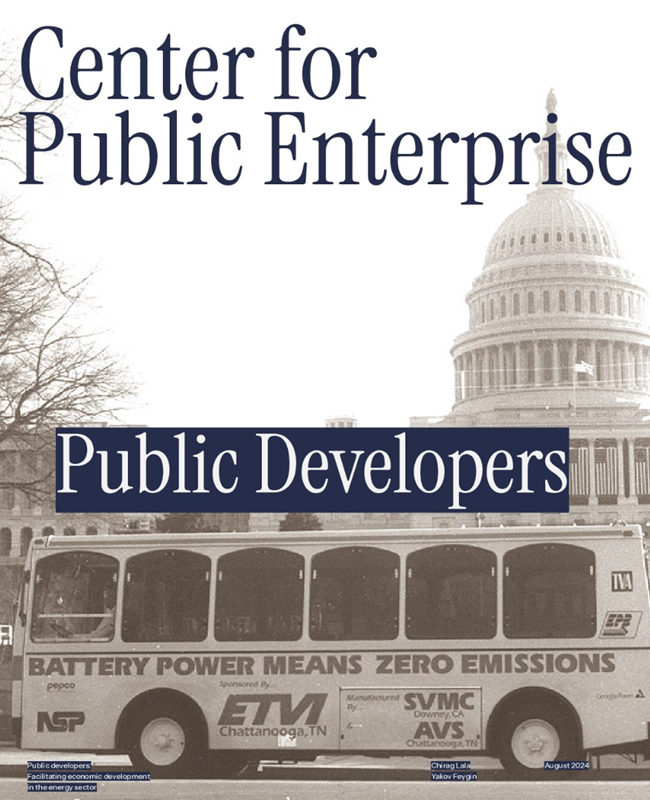The Inflation Reduction Act (IRA) and Bipartisan Infrastructure Law (BIL) have greatly expanded the reach of the public financing of renewable energy through tax credits and public lending programs. The goal of these policies is to help reduce the cost of capital for energy projects by utilizing the federal government’s low costs of financing, ability to lend for longer durations, and fiscal capacity. Some of these programs—particularly the IRA’s elective pay provisions—are aimed at allowing public and nonprofit entities to directly access the federal balance sheet, as private entities already do through tax credits.
However, publicly supported finance is not the same as public development. Publicly supported finance helps reduce a project’s cost of capital, while public development engages with all of the steps in a project development pipeline from planning projects to raising capital to operating and maintaining assets to marketing their outputs, all the while cultivating technical and operational expertise. In other words, while public lenders only take on debt financing for another entity, public developers use that financing to create capital assets. This means public developers take additional risks compared to public entities solely engaged in providing finance. But, as a result, public developers have far more latitude for capturing the value of the assets they develop, pursuing projects for the public good and for cultivating the market and sectoral dynamics conducive to their strategic goals in the process.
The close relationship between public finance and public development means that, in practice, many public lenders have implicitly—if not explicitly—become public developers. For example, many “green banks” have used their equity capital to create special purpose vehicles for directly supporting energy projects borrowing from the bank through intervention in contracting and procurement, interfacing with federal and state regulators, and/or aggregating other sources of funding to support those projects, paying back the bank through a power purchase agreement or lease. The effectiveness of such programs in delivering savings to consumers, improving grid reliability, and/or facilitating emissions reductions is premised not just on the low cost of capital that these dedicated public entities are able to access from the green bank, but on the functions taken on by the project development arms of the green banks and their partners.
In this briefing, we will outline the many functions that public development plays in the U.S. energy system and how its various modes can deliver important advantages over a pure financing approach to energy policy. We will then briefly outline some best practices for entities engaged in public development with an eye toward helping public lenders, state legislators, and staff at other non-lending agencies think about taking the next step: becoming developers.
More About this Resource
Publisher: Center for Public Enterprise
Date: August 22, 2024
Type: Report
Tags: Direct Pay, Policy, Project Finance
Sector(s): Other Climate
State(s): None
